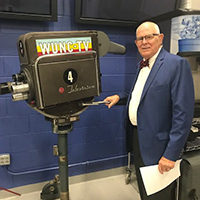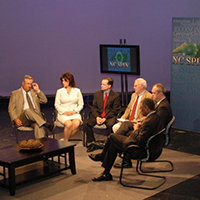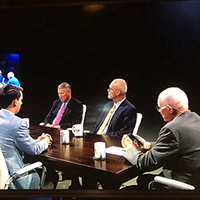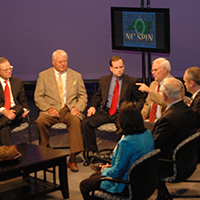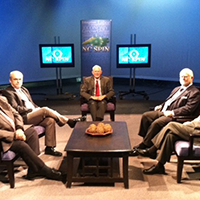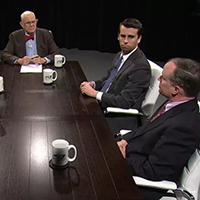Preserving the legacy of a remarkable school-building program
Published May 17, 2015
by Bob Asley, Durham Herald-Sun, May 9, 2015.
Around the turn of the 20th century, Julius Rosenwald was building Sears, Robuck and Co. into the mail-order behemoth that embedded itself in American culture as that century’s Amazon.com.
In the process, he became a multimillionaire. And as he reached age 50, in the words of the website philanthropyroundtable.com, “Soon he was giving away money with at least as much gusto as he poured into earning it.”
Influenced by and in league with the great African-America educator Booker T. Washington, he poured much of his generosity into building schools for African-American children in the rural South.
In those days of virulent Jim Crow segregation, that was no small game-changer. For most black children in the region, education facilities, if available at all, were miserably substandard.
Enter Rosenwald’s wealth, channeled through the Julius Rosenwald Fund. Three years after its inception in 1917, the fund established an office in Nashville, Tennessee. Within a decade, “one in every five rural schools for black students in the South was a Rosenwald School, and these schools housed one-third of the region’s rural black school children,” according to the National Trust for Historic Preservation.
“At the program’s conclusion in 1932, it had produced 4,977 new schools, 217 teachers’ homes and 163 shop buildings, constructed at a total cost of $28,408,520 to serve 663,615 students in 893 counties of 15 states,” the trust’s website says.
To ensure we remember that legacy, the trust is intent on preserving as many of the schools, most of which already have been lost, as possible. Next month, it will host the 2015 National Rosenwald Schools Conference: “Sharing the Past?Shaping the Future” here in Durham. Preservation Durham, on the board of which I sit and which I served a year as executive director before returning to the paper, is a partner, along with the Durham Convention and Visitors Bureau and other area organizations.
Reporter Katie Jansen wrote Monday about a Durham County Library program with author Sarah Thuesen that served as a preview of the conference.
Durham County is home to one of the Rosenwald Schools, the Russell School on St. Mary’s Road. The building is on the National Register of Historic Places and the adjacent Cain’s Chapel Baptist Church, which owns the property, has been seeking help in raising funds to update systems to meet codes and allow the building to be used as a community center.
The building, last used as a school in 1945, is in encouragingly good shape. “The high level of integrity of Russell School is remarkable,” preservationist Ruth Little wrote in the school’s nomination for the National Register in 2009. To stand in the virtually unaltered interior is to have a sense of the opportunity it most have afforded Durham county children who otherwise would have had none. A decade before the school’s construction in 1926-27, Charles Moore, state inspector of colored schools, wrote “in no other county did I find the school house upon the whole in such an inferior condition as I find them in this county for the colored school children.”
I’m pleased the conference will be here, to highlight the gratifying story of Julius Rosenwald’s philanthropy and the legacy of schools such as the Russell School – and to ensure they will remain palpable reminders of a rare bright spot in a shameful era.
